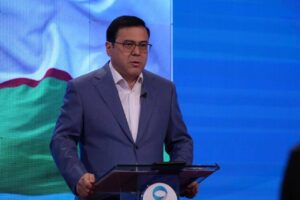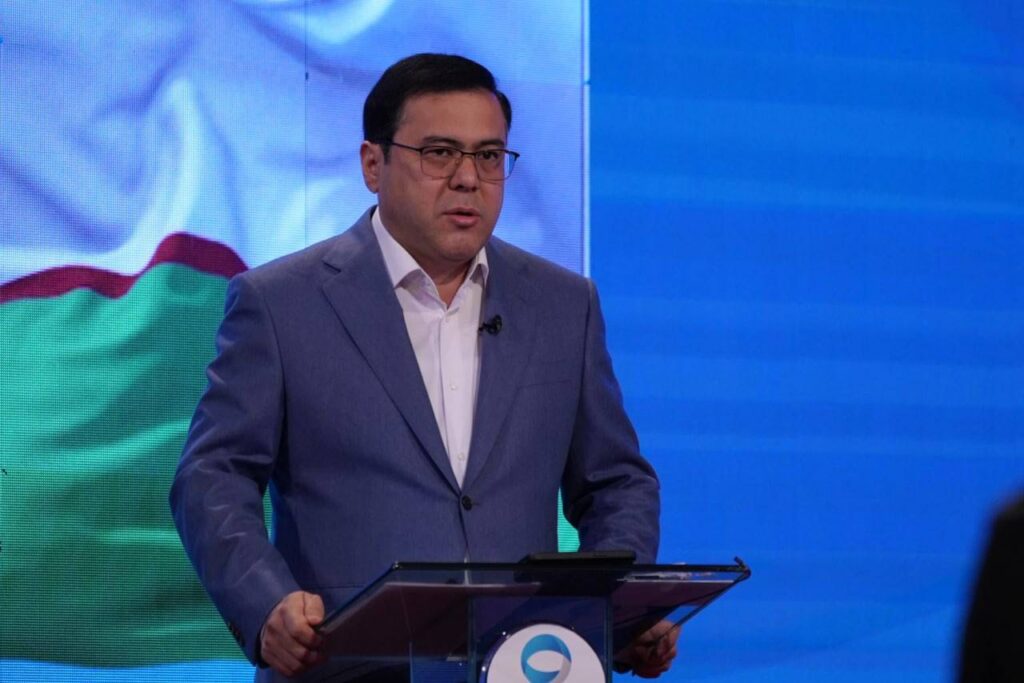By Professor Sherzodkhon Kuratkhoja
In recent years, the general trends in the development of the world education system have changed. Proceeding from these requirements, particular attention is paid to the professional education of journalistic specialists in our country. In the contemporary globalized world, as a result of the swift development of the media sector, the increase in information streams and the development of technology, the need for information sector professionals has increased several times over. As a result, in order to respond to the demand on the media industry job market, it is important to train professionals who are not only educated, but also proficient in modern technologies. To operate successfully in today’s complex media landscape, young people require high-level skills, the ability to think globally and the capacity to report impartially on a variety of issues and scales.
The University of Journalism and Mass Communications of Uzbekistan was established by the President’s decree of 24 May 2018. Over the past six years, the university has provided teaching in print media journalism, online journalism, media design, media marketing and advertising, TV and radio journalism, sports journalism, international journalism, information services and public relations, military journalism, arts journalism, economic journalism, political science, sociology, psychology and other areas are open. The University of Journalism provides education at the bachelor’s, master’s and doctoral levels. Nowadays, graduates of these educational directions work on television, radio, in newspapers-magazines, information agencies, websites, publishing houses, information services of ministries, organisations and enterprises, advertising agencies and other places. Journalism education is now offered in more than ten universities of our country.
The University of Journalism and Mass Communications of Uzbekistan educates about 4,500 students. In the founding year of the university, 8 Bachelor’s and 10 Master’s degrees were opened, and 17 Bachelor’s and 17 Master’s degrees were in operation in the academic year 2022-2024. In 2018, there were 3 faculties and 2 chairs in the university system. 5 departments in 2019, 6 departments in 2020, 9 departments in 2021 and 10 departments as of today (Social Humanities, Uzbek Language and Literature, Media Theory and Practice, Military and Sports Journalism, International and Audiovisual Journalism, Foreign Languages, Digital Media and Internet, Media Management and Media Marketing, Media Design, Information Service and Public Relations departments are operating.
For instance, for the first time in the current academic year, the subject “Artificial Intelligence in Media” is being taught. Using the use of neural networks as a source of information, students acquire a number of skills, such as creating meaningful photo and video materials and processing large amounts of data. There is much to say about the conditions at the University of Journalism and Mass Communications of Uzbekistan. Students have access to newly built academic buildings, studios, multimedia centers, and modernly equipped classrooms. Also, as a uniqueness, the “open-air” zones are convenient for students. According to findings, outdoor learning is 81 per cent more effective than classroom learning.
The university has a wide international co-operation. There is a regular exchange of experience in educational and scientific spheres with higher educational institutions of such countries as USA, Germany, Republic of Korea, Russia, Turkey, China, Kazakhstan, Azerbaijan. In cooperation with Turkey and Germany, a TV and radio studio, a photo lab, a student press club, and a co-working centre were set up in cooperation with the Agency for Youth Affairs. The aim of creating such an environment is to train talented, knowledgeable, professional staff for our national media in the current era of freedom of speech and opinion, openness and transparency. Now our goal is to become a major media university in Central Asia in the next 10 years.
It is also worth noting the ongoing work on the integration of the educational process and practice. A number of works have been carried out to retain students in modern editorial offices from the first year and to introduce a system of qualified practice until the end of their studies. In particular, branches of the department have been opened in leading mass media. In addition, the university publishes a student publication, Minbar. The “Book and Cinema” and “Student Theatre Studio” clubs provide meaningful leisure activities for young people.
The University of Journalism and Mass Communications of Uzbekistan is one of the country’s leading institutions of higher education, offering high-level education in the field of media and communications. The University’s educational programmers meet modern information and communication requirements. In the classes, special attention is paid to the acquisition by students of skills corresponding to the requirements of the labour market. In this process, students perfectly master the multifaceted skills of information creation, in particular, analyzing, writing, photo and video recording, editing, and working with information sources. The current state of information development requires journalism education to keep pace with practice and move in line with new trends. At our university, students are trained according to the same requirements.
Today there are 9 languages taught at the university. In the near future, we want to open faculties of the neighboring countries’ languages. Our dream is to train highly qualified journalists in Uzbekistan who speak dozens of languages – Korean, Arabic, Turkish, Spanish. Then the ideas of our ancestors about independence, freedom of speech and revival will be realized.
Nowadays, the field of research in journalism and media is being actively developed at the university. Young researchers work on such modern topics as artificial intelligence in copper, work with data sources of information and fact checking, multimedia journalism, new trends in online media, the development of inclusiveness in the field of media and much more. To support the development of the university’s academia, the scientific journal “Media and communication in Central Asia” are established last year. Uzbek and international scholars publish here and share their scientific articles in the field and communication in the Central Asian region. As a new direction, the scientific laboratory is being developed today, the “Laboratory for the Study of Visual Media and Visual Narratives”, created by young scientists from the university, works to study and analyses the visualization and its new aspects. Within the framework of the functioning of the “Scientific school for the study of the Jadid heritage” publications and periodicals published by the Jadid intellectuals of the XIX-XX centuries are studied.
Author:Professor Sherzodkhon KURATKHOJA is Rector of the University of Journalism and Mass Communications of Uzbekistan.


